Between 1980 and 2000 was Queensland rugby’s golden era. We look back at our top 50
Queensland rugby is again basking in the glory of success after the Reds’ drought-breaking win over NSW at the weekend. But not long ago success was common. We look back at Reds rugby’s golden-era top 50 players, 1980-2000. Today, Nos. 50-41.
Local sport
Don't miss out on the headlines from Local sport. Followed categories will be added to My News.
Queensland rugby is again basking in the glory of success after the Reds drought-breaking win over NSW last weekend. But not long ago success against the Blues was common.
In this five-part series starting today, we look back at Reds’ rugby’s golden era top 50 players, 1980-2000.
To be considered for the top 50, you must have played a majority of your career in the state or been born in Queensland.
It is why, for example, David Giffen, Pat Howard, Brendan Cannon, Brett Robinson (all ACT stars) and Geoff Shaw (NSW) missed out.
The criteria is also why someone like Nathan Sharpe is not higher up the rankings.
So strong was Queensland rugby in that era, a host of outstanding players were unlucky omissions.
Easts were a mighty club side in that era, spearheaded by the likes of Nigel Holt, Greg Hassell, Shaun Hourigan, Richard Graham and Brett Scott, while Sunnybank built a fortress around Biggs Field through an army of fine club players, headed by Damien Hearne, Roy Saunders and Drew Barrett.
Uni’s David Nucifora was a dreadfully unlucky omission, while Wests backrower Scott Harris, Ross Hanley of Brothers, Souths fly-half Tyron Mandrusiak and GPS zip-zip man Ryan Constable and premiership forwards Mark Murray and Christiaan Knapp were fine talents.
It is a Melbourne Cup field of talent and today we present the No. 50-41 ranked players from our golden era.
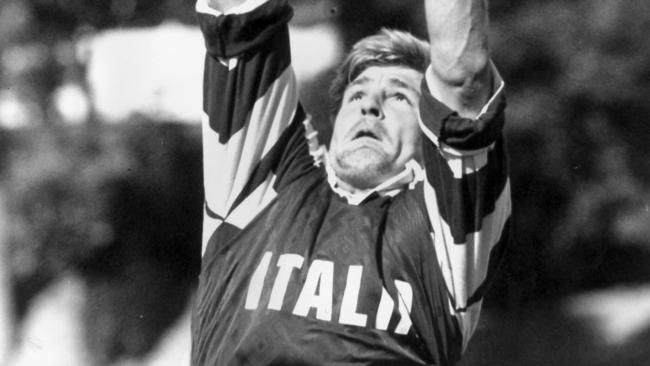
No 41.
JULIAN GARDNER
A veteran of four-Tests for the Wallabies and 20 for Italy, Gardner was a fierce backrower not to be messed with. Originally a Brisbane Boys College old boy where he benefited from the coaching of Peter Horton, Gardner switched to Brisbane Grammar School where he came under the tutoring of the legendary Alec Evans. Evans, a renowned hardman, then coached Gardner at Wests where he was a brut for opposing forwards. An excellent third lineout option for his hookers, Gardner’s aggression was well suited to the 15-a-man game. But he was also skilful enough and fast enough to play seven-a-side rugby with ease.
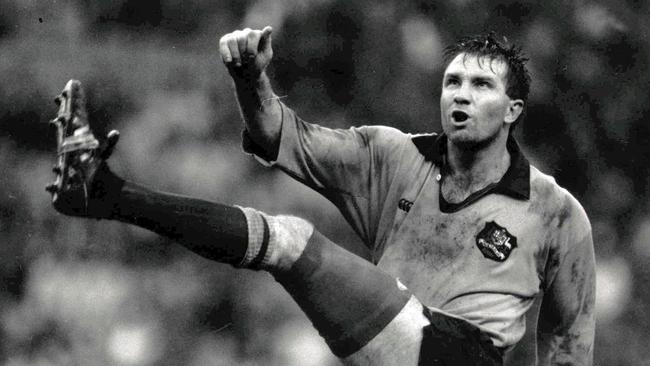
No. 42
GREG MARTIN
It would surprise no one that observed Martin’s off-field antics around the suburban rugby union clubhouses in the 1980s to learn that, one day, he would become the king larrikin of the airwaves. He was loud and entertaining off the field, in complete contrast to his sturdy, at times heroics deeds, playing fullback for University, Queensland and Australia. A Brisbane Grammar School old boy, Martin was all business on the field. Indeed he stood at the back of teams like a member of the Queen’s Guard, undaunted by the thunderous footsteps of eight marauding opposition forwards coming at him after a garryowen had been hoisted into the air. Once in possession, Martin possessed a towering left foot clear kicking. What a sight it must have been for his breathless forwards to seeing a spinning torpedo kicking go whizzing back over their heads and upfield, far away from trouble. Martin was also a nice attacking player with quick hands and vision. Today he is a popular host of the Triple M breakfast show in Brisbane.
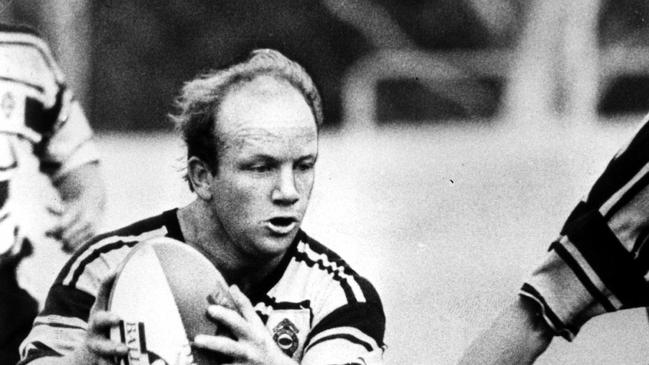
No. 43.
MARK MCBAIN
McBain was a magnificent hooker who played the game with such energy, he could have been mistaken for an open side flanker. Although his international career was blocked initially by
Chris Carberry, Bill Ross at the start of his career, and then by the hulking Tom Lawton later on, McBain still managed seven Test caps and a decorated career for Queensland. The St Joseph’s Nudgee College old boy was the type of player teammates loved to play with, such was his courage and zest. One of his greatest achievements came at club level when, in 1987, he spearheaded Brothers to an upset grand final win over Souths. The Magpies were lead by Andrew Slack in the backs and David Codey in the forwards, but McBain was inspirational in leading his largely unheralded pack around the field. Brothers came from fifth place to win the title that year and McBain was a huge reason for the club’s unexpected success that season.
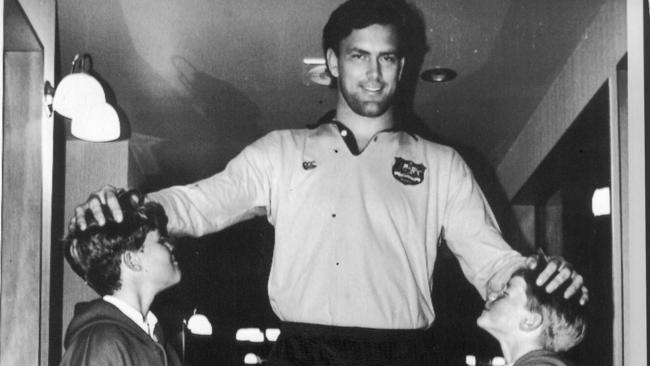
No. 44.
BILL CAMPBELL
The towering Campbell was the cornerstone of the Queensland lineout between 1984 and 1990. Standing at more than 2m in height, he was a wonderful player on the field and a mentor off it to young Queensland second rowers Rod McCall and John Eales who carried on in his proud tradition in the 1990s. Originally a Villanova College student who switched to St Joseph’s Gregory Terrace, Campbell made his Test debut in 1984 and following a learning period behind Steve Williams and Steve Cutler, Campbell made the lock position his own later that decade. From the Wests’ Bulldogs club, he appropriately finished his international career helping Australia break New Zealand’s 50 match winning streak with an upset 21-9 victory in Wellington.
No. 45.
TONY PARKER
Parker was a treasured teammate of Queensland players in the early to mid-1980s and a vital member of Queensland’s continued resurgence which started in the 1970s. He was the perfect link between his forwards and his fly-half Paul McLean, and someone whom the national selectors recognised in 1983 when he played three Tests. Indeed the St Joseph’s Gregory Terrace old boy was somewhat unlucky to play in an era when Australia was blessed with elite No. 9s, the great John Hipwell, the fleet-of-foot Philip Cox and an emerging Nick-Farr-Jones. But the selectors still found room for him on multiple Wallaby tours and he won his first Test captain at his beloved Ballymore against Argentina as a replacement. Seven days later Parker, from the University club, made his starting debut in Australia’s series equalling victory over Argentina and later in the winter he partner the brilliant Mark Ella in the Wallabies 18-8, Bledisloe Cup Test loss in Sydney.
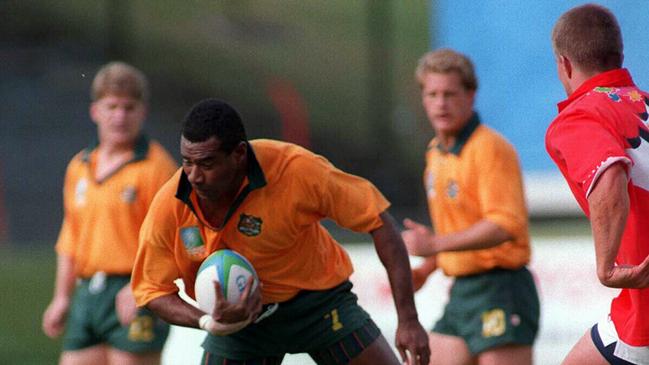
No. 46.
ILIE TABUA
Fijian-born Tabua was a magnificent backrower and a key part of John Connolly’s Queensland side in the early 1990s. Although he was 190cm, so spring-heeled was he in the lineout that Tabua was competitive against taller rivals. He was a wonderfully balanced backrower who could hit like a torpedo in defence while aggressively carrying the football in a low, semi-crouched motion. Tabua owed a lot to his former coach at the GPS club, ex-Wallaby hooker Chris Carberry, who sorted his immigration problems in the late 1980s. Once Tabua was able to finish a life of dodging authorities off the field, he became more settled and as a result his success on the rugby field flowed. Tabua played four Tests, but was good enough to play many more.
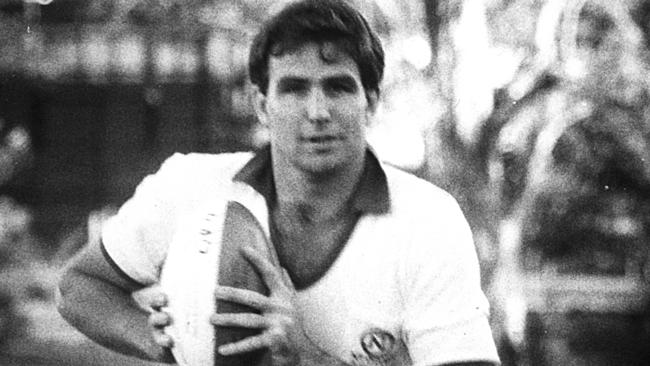
No. 47.
DAMIEN FRAWLEY
The broad shouldered Frawley was a tower of strength for the powerhouse Brothers club, progressing from representing the Australian schoolboys from St Joseph’s Gregory Terrace, to play 10 Tests for his country. Primarily a second rower, he found his way to his senior representative debut for Queensland in 1985 the hard way after competing with the likes of David Hillhouse, Nigel Holt, Bill Campbell and Troy Coker, all elite players in his position. By 1988 Frawley had wriggled his way into the Wallaby side alongside towering NSW player Steve Cutler.
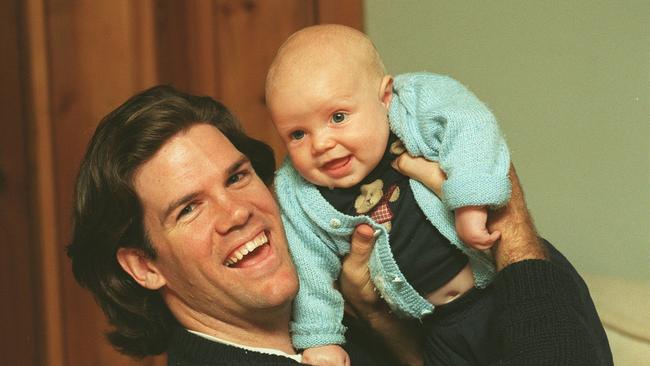
No. 48
PAUL KAHL
The likeable Kahl was a wonderful contributor to his club Easts and Queensland rugby – both on and off the field. A fly-half with a towering boot, the unassuming Kahl played the game for all the right reasons and as such was warmly embraced by teammates. He played in the same era as the freakishly good Michael Lynagh, but if Lynagh was injured or away playing overseas, Kahl fitted seamlessly into the Queensland No. 10 jersey. His finest season was 1992 when he helped Queensland beat Auckland on its way to winning the Super Six Series. The Australian selectors then rewarded Kahl with Wallaby touring selection, with the pinnacle of his career coming in November, 1992, when he played his only Test at Cardiff Arms Park against Wales. Kahl’s tactical kicking was key in Australia winning the match. On the club front, he was wonderful servant of the Easts Tigers.
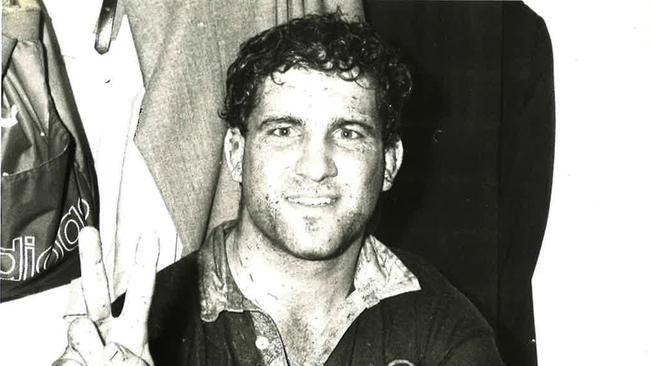
No. 49.
BRENDAN NASSER
A hard-nosed backrower, the Terrace old boy was a mighty contributor to reinstating Queensland as the superior Australian rugby province in the late 1980s. After Queensland had a modest 1988 season, Nasser was part of gritty Reds side which, under new coach John Connolly, rose to topple arch enemy NSW in 1989. So well did Nasser play, he was named on the Wallabies tour to Canada and France. His form held and by 1991 he was an automatic choice in the Wallaby World Cup touring squad, although not in Australia’s first choice 15. His eight Tests and success for Queensland was reward for a fantastic player from the University club, the type of forward a coach could build premiership success around.
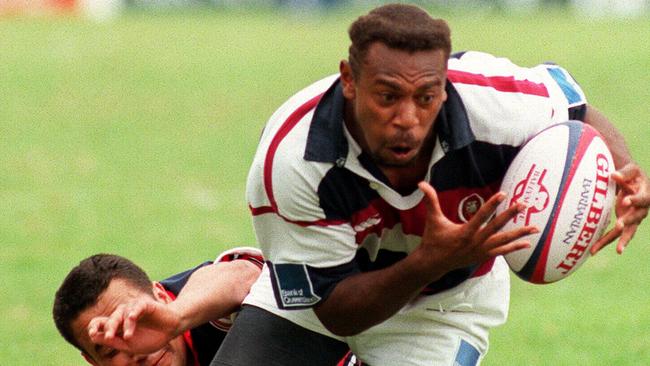
No. 50.
BARRY LEA
Barry Lea was a simply bewildering talent whom the rugby faithful would loved to have seen more of. A winger, Lea emerged from The Southport School nursery as an extraordinary somersaulting athlete who had every skill in the book. He became a Wallaby after thrilling Queensland crowds in the early 1990s, but then lost his way before mounting a comeback later in the 1990s where he found himself behind Damien Smith and Ben Tune. A fantastic talent.
